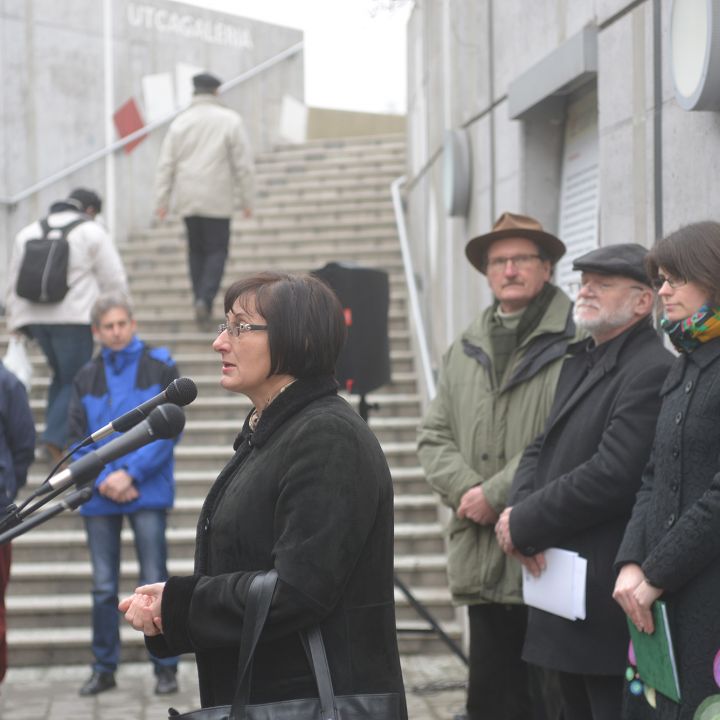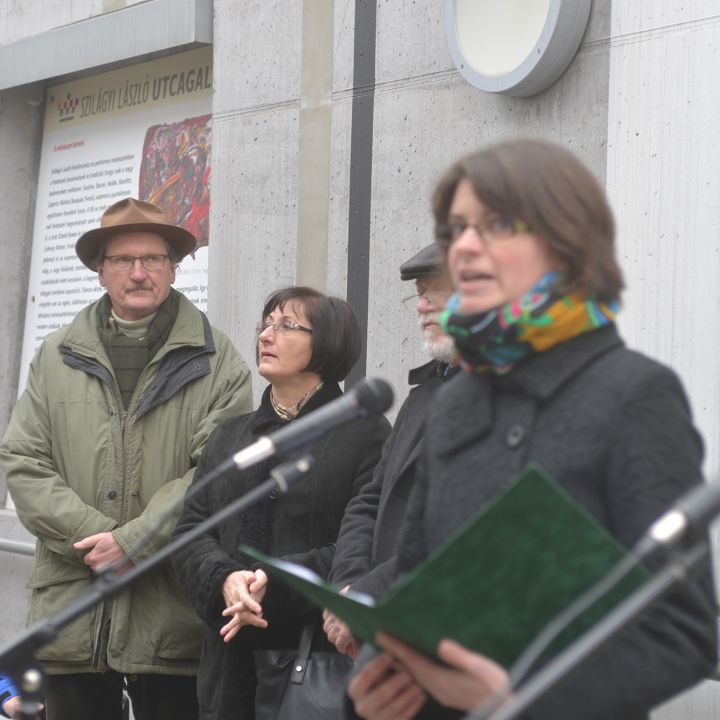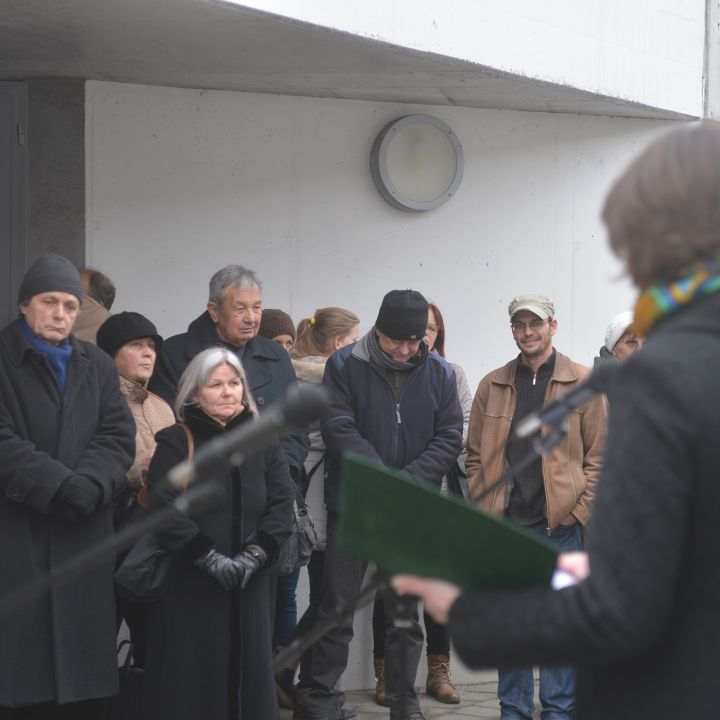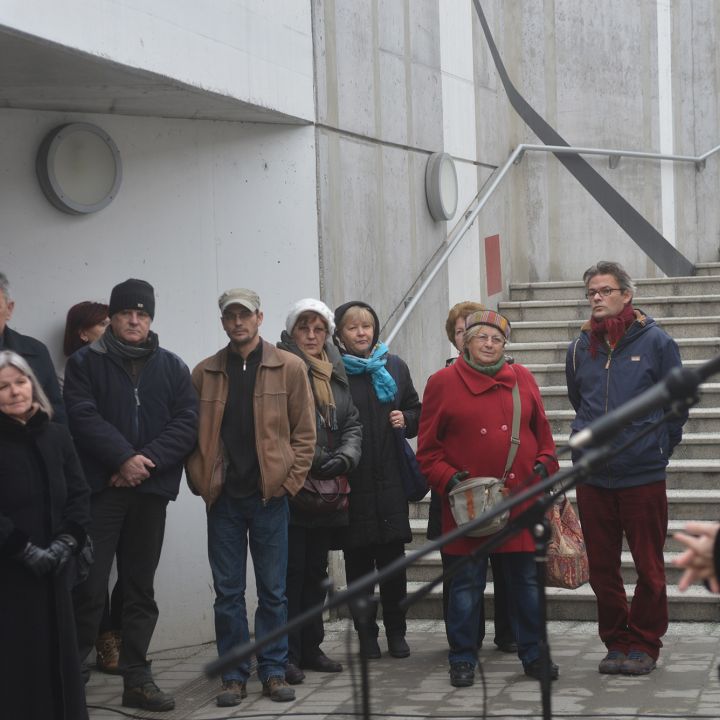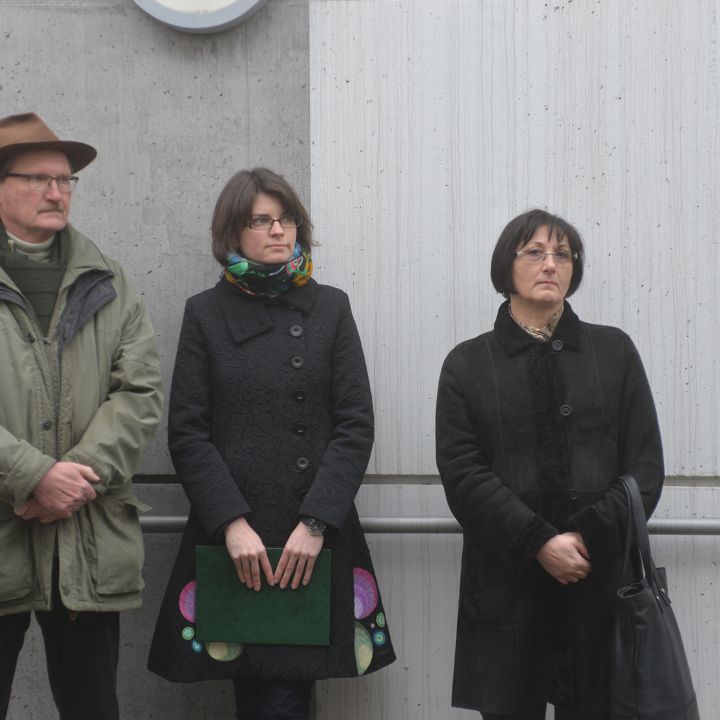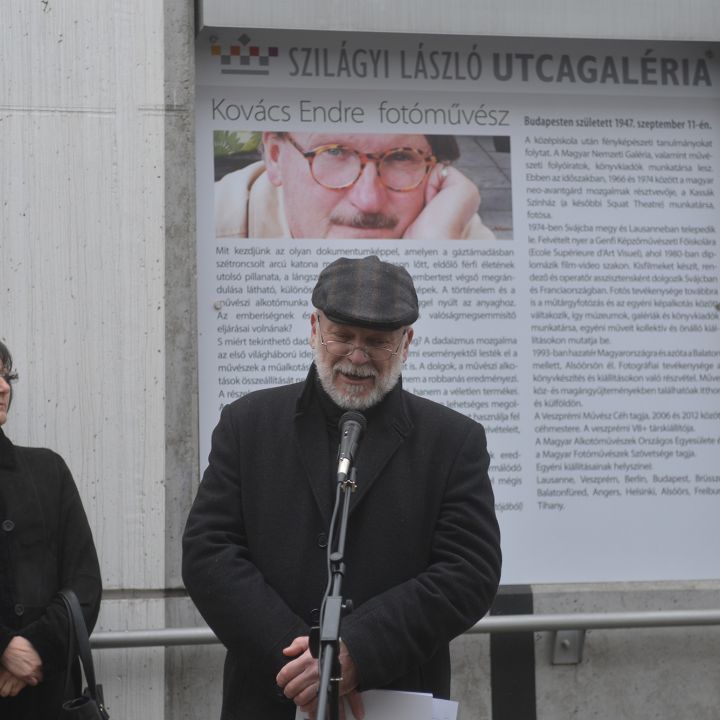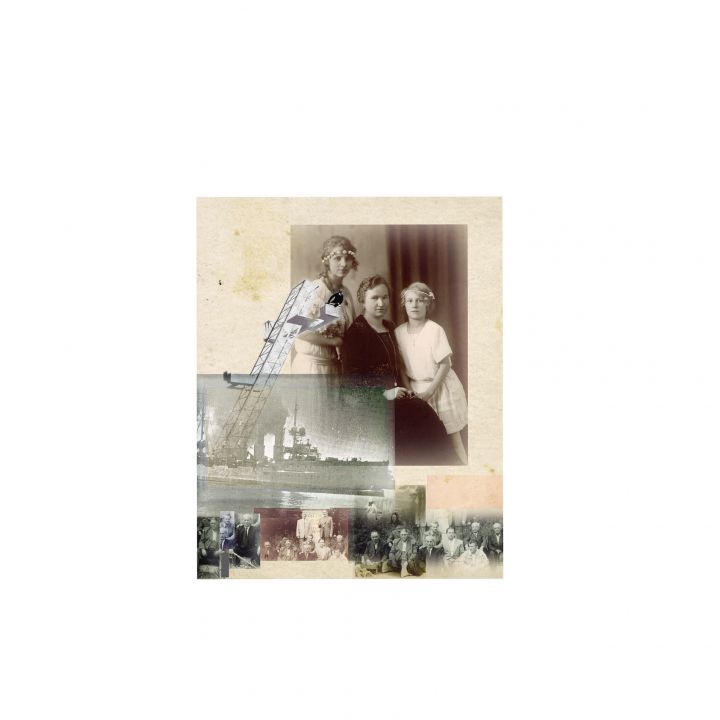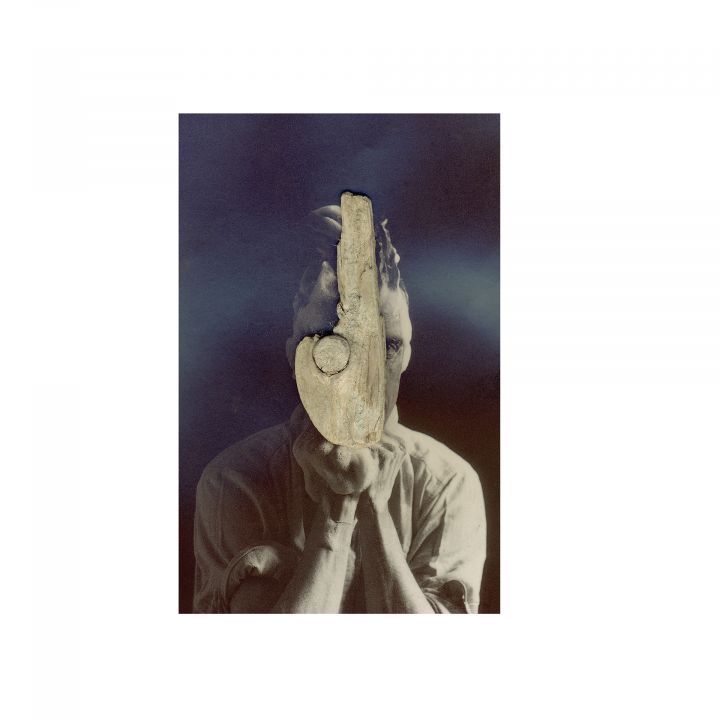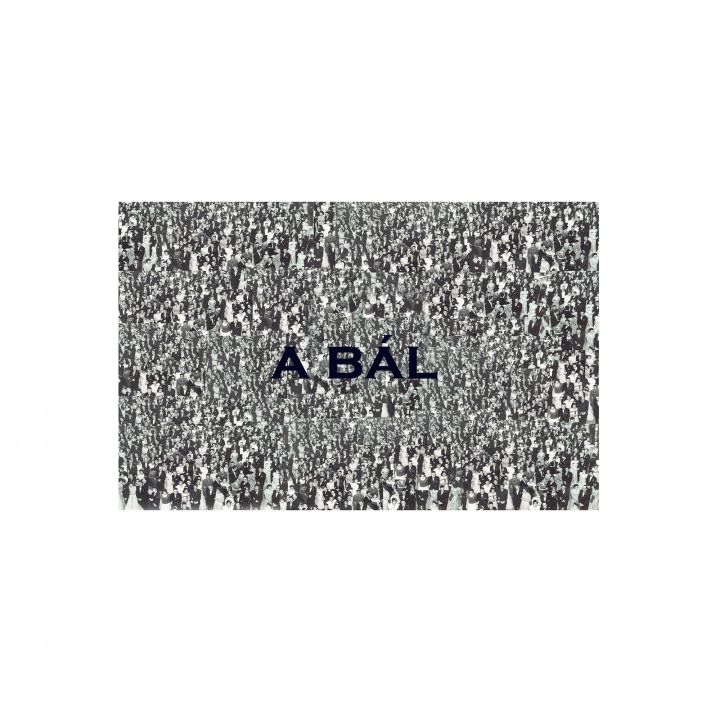The pictures on the walls, in the midst of which so many of us are standing are disturbing scenes. We are in a predicament, if for no other reason than that we suddenly don't know what we are looking at in the palm-sized images. What is it that we perceive from them and what meanings do we make of these rectangular images?
There are barely two dozen pictures, made by the printer, originally scanned and selected by Endre Kovács and an exhibition title (i.e. '14/'18), which is so prominent on the invitation card, giving a direction to decipher their meaning. In addition in a certain part of the prints sometimes in the space of the image, sometimes below the lower edge of the image are place names: Isonzo, Arras, Tarnopol, Champagne, Ypres, Lenberg and other European place names.
In the other half of the collection the visual impact of the image is no longer complemented by the names of the towns, which do not identify the location and allow for interpretation. They have been replaced by a word or phrase indicating content. Each of the 23 works is a visual masterpiece and the iconic material is supported by words: indexes or symbols. The combination of image and word has been a common practice in art for at least a hundred years, not to mention the fact that it is also used in the printed products of modern societies, precisely to define the interpretation of the recipient and to focus the meaning of the works. The image we are looking at is a telescope that sees into different time and space from our own with verbal messages on its lens to identify the view.
Two distinct groups of inscriptions have thus emerged in the collection. The pictures, which also name some of the battlefields of the First World War with text - one of the sections - are contemporary photographs, authentic and more or less well known documents that can be dated. The other group of images consists of photomontages by Endre Kovács for which the artist used his own landscape photographs, photographs of objects and selected details of found photographs of older origin.
What the two groups of images have in common is not only the creative technique: while it is true that the works are tinted, sometimes dissolved by enlargement, pixelated, the cruel treatment of the used, found or self-made shots that form the raw material of the work process is more astonishing.
...
Cuts, rearrangements, incisions, tears, stains, fading or garish smudges, surfaces without contours result in a poignant chaos in the works of Endre Kovács, which are transformed into finality, yet the confusion of which remains interpreted through the inscriptions. The infernal disorder has become, if not acceptable, then comprehensible. And the uniform size of the works also promises order in the collection. All the prints on display are the same size as the postcards from the First World War. It is precisely this size, which precisely points to a specific period that has made it possible to add textual explanations to the visuals without requiring an explanation.
And why this exhibition should be considered Dadaist needs no explanation. Dadaism emerged during the First World War and artists undoubtedly borrowed their artistic processes from social events. And the philosophy too, the way things are put together is not by harmonious order but by explosion. The parts are not put together organically, but are the product of chance and man accepts this as normal, as the only possible solution. Endre Kovács uses archival World War images and his own contemporary footage as a result of his re-reading of this experience, after all they share the same forces of artistic organisation.
There is no age that does not want to recreate the past. The period in which we live now has the need to examine an event, namely the First World War as a possible period that offers explanations for today's questions, but for which the previous age(s) have not provided a valid explanation that is relevant to the present. Endre Kovács' mini exhibition is also about the alchemy of rewriting the past.
János Géczi

